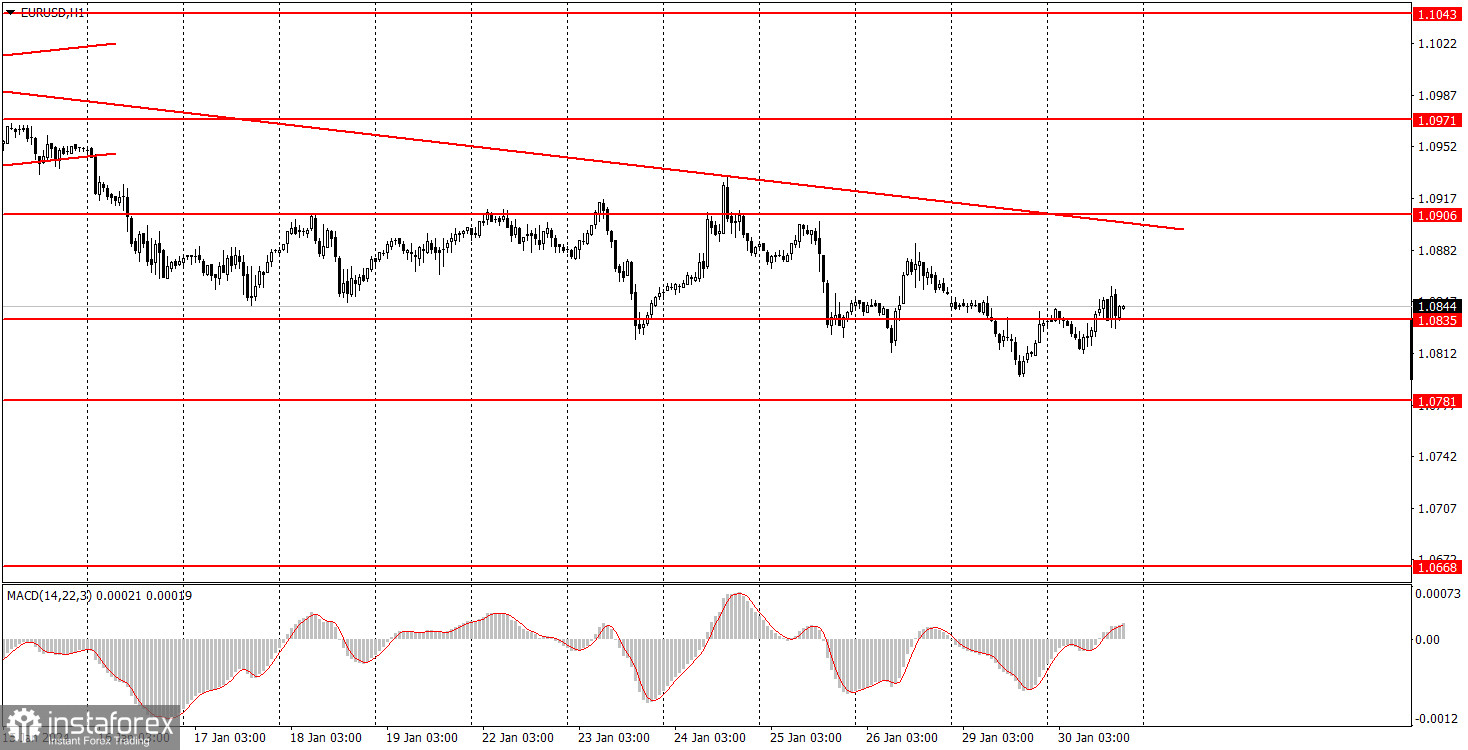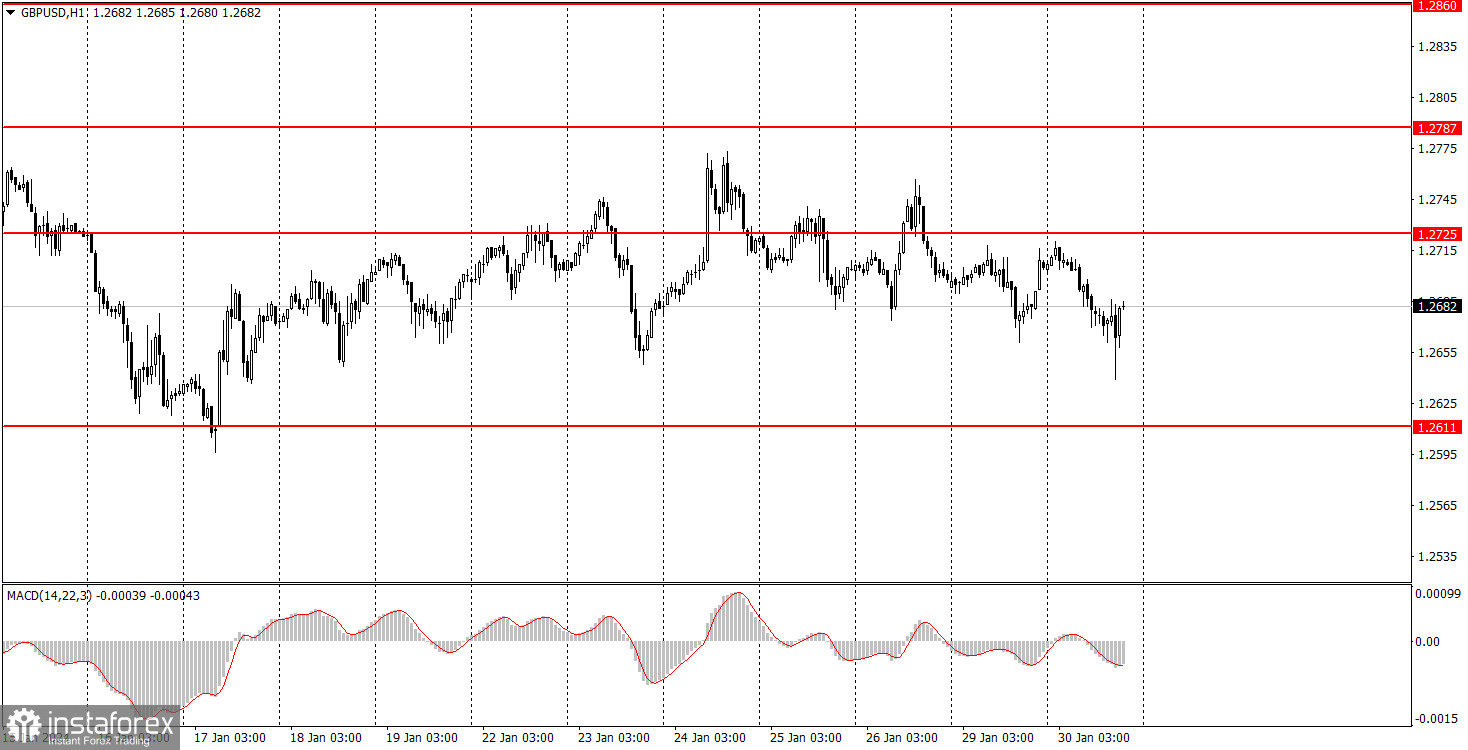Analysis of macroeconomic reports:

There will be a good number of macroeconomic events on Wednesday, but both currency pairs are currently showing a movement pattern that raises doubts about the ability of these reports to have a significant impact. The German economy will be under the spotlight. Inflation, retail sales, and unemployment figures need consideration. Naturally, the inflation report is considered the most important. Moving forward, there is nothing interesting in the UK. And from the US docket, an important ADP report (comparable to NonFarm Payrolls) will be released and the FOMC meeting will take place, which we will discuss below.
As mentioned earlier, we doubt that these reports can change anything in the market. The problem is that the euro is showing very weak volatility and weak downward movement with constant upward retracements. On the other hand, the pound has been in a flat phase for a month and a half, so it needs very strong data to leave the sideways channel.
Analysis of fundamental events:
Among the fundamental events of Wednesday, we can only highlight the FOMC meeting. There is a 100% likelihood that the key rate will remain unchanged. However, at the press conference, Federal Reserve Chair Jerome Powell may give traders an idea of what to expect at the March meeting and what his decision will depend on next time. This information can affect the US dollar since the market still does not have a clear understanding of when the rate will be cut for the first time.
General conclusion:
On Wednesday, we expect the movement of both currency pairs to be weak and probably confusing. The flat will likely persist for the pound, and the euro will continue its sluggish downward movement. In the evening, we may witness an emotional surge from the market, and Powell's speech may finally liven up the market and set the direction for trading in the coming weeks.
Basic rules of a trading system:
1) Signal strength is determined by the time taken for its formation (either a bounce or level breach). A shorter formation time indicates a stronger signal.
2) If two or more trades around a certain level are initiated based on false signals, subsequent signals from that level should be disregarded.
3) In a flat market, any currency pair can produce multiple false signals or none at all. In any case, the flat trend is not the best condition for trading.
4) Trading activities are confined between the onset of the European session and mid-way through the U.S. session, after which all open trades should be manually closed.
5) On the 30-minute timeframe, trades based on MACD signals are only advisable amidst substantial volatility and an established trend, confirmed either by a trendline or trend channel.
6) If two levels lie closely together (ranging from 5 to 15 pips apart), they should be considered as a support or resistance zone.
How to read charts:
Support and Resistance price levels can serve as targets when buying or selling. You can place Take Profit levels near them.
Red lines represent channels or trend lines, depicting the current market trend and indicating the preferable trading direction.
The MACD(14,22,3) indicator, encompassing both the histogram and signal line, acts as an auxiliary tool and can also be used as a signal source.
Significant speeches and reports (always noted in the news calendar) can profoundly influence the price dynamics. Hence, trading during their release calls for heightened caution. It may be reasonable to exit the market to prevent abrupt price reversals against the prevailing trend.
Beginners should always remember that not every trade will yield profit. Establishing a clear strategy coupled with sound money management is the cornerstone of sustained trading success.






















